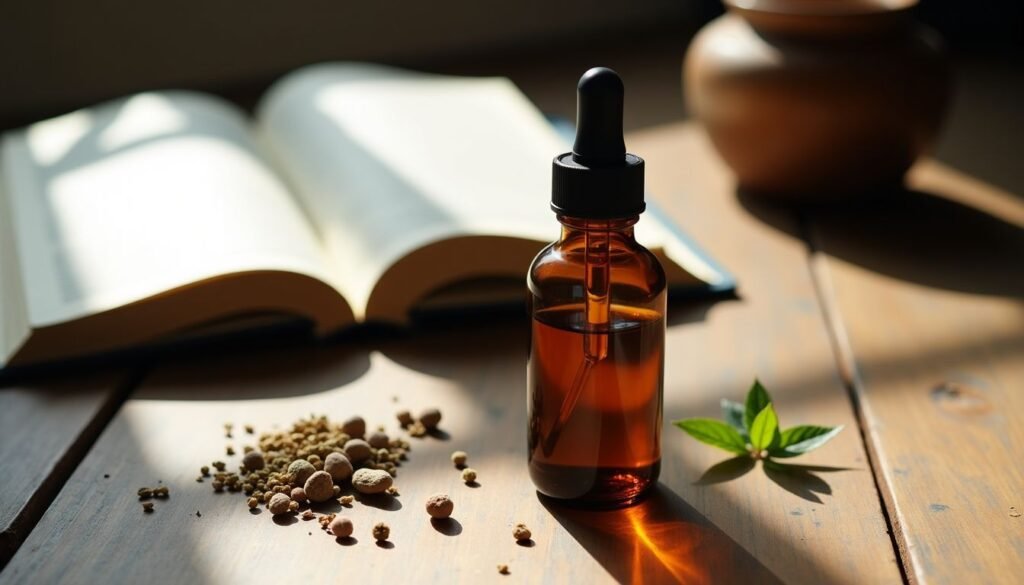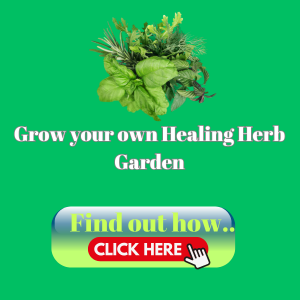Feeling under the weather with a nasty cold? It’s no fun at all. As someone who has studied natural remedies for cold relief in depth, I can share insights about Echinacea Cold And Flu, a popular choice for many people seeking natural ways to ease symptoms.
This article will show you how to use echinacea for colds and flu. If you’re interested in feeling better, I’ll explain how this powerful herb can help boost your immune system and potentially speed up your recovery.
Key Takeaways
- Echinacea may boost the immune system and reduce cold symptoms, with studies showing it can cut cold risk by 58% and shorten symptom duration by up to 67%.
- The recommended dosage of echinacea is 450-4,000 mg daily, available in capsules, teas, and tinctures. It’s best to start taking it at the first sign of illness.
- People with autoimmune disorders or those on immunosuppressive drugs should avoid echinacea. It can interact with some medications, including heart and antifungal drugs.
- While echinacea shows promise for cold relief, research results are mixed. It may offer a 10-20% reduction in cold risk, but more studies are needed to confirm its effectiveness.
- When choosing echinacea products, look for trusted brands using whole plant extracts of Echinacea purpurea, and check for third-party testing to ensure quality and purity.
What Is Echinacea?

Echinacea is a purple coneflower that’s been used for centuries as a natural remedy. It’s packed with compounds that may help your body fight off colds and flu.
Listen to the full podcast below on this subject…
Overview of the plant
Echinacea is a stunning flower native to North America. Its vibrant purple petals and spiky center make it stand out in any garden. I’ve observed this plant work wonders for many people.
The entire plant offers significant health benefits. From its roots to its flowers, each part holds unique properties. Native Americans have relied on echinacea for centuries to boost wellness.
This hardy perennial belongs to the daisy family. It thrives in prairies and open woodlands across the U.S. and Canada. There are nine different species, but three are most common in herbal medicine.
These include Echinacea purpurea, Echinacea angustifolia, and Echinacea pallida. Each offers slightly different benefits, making them valuable for various health needs.
Key components and active compounds
Echinacea packs a powerful punch with its key components. I’ve observed how its active compounds work wonders for immune health. Caffeic acid, alkamides, phenolic acids, and rosmarinic acid are the stars of the show.
These natural chemicals give echinacea its immune-boosting edge. Alkamides play a big role in tweaking our immune response. Meanwhile, phenolic acids help tamp down inflammation in the body.
These plant chemicals don’t work alone. They team up to create a natural remedy that’s stood the test of time. I’ve recommended echinacea to many patients seeking a gentler approach to wellness.
Its blend of active compounds offers a natural way to support the body’s defenses. This herb shows how nature provides some of our best tools for staying healthy.
How Echinacea Works for Cold and Flu Relief
Echinacea packs a punch against colds and flu. It boosts your immune system and fights inflammation to help you feel better fast.
Boosting the immune system
I’ve seen firsthand how echinacea can give your immune system a real boost. This powerful herb increases white blood cell production, which helps your body fight off invaders. It also activates special immune cells called macrophages and natural killer cells.
These cells act like your body’s personal army, attacking harmful germs that make you sick.
Echinacea doesn’t just work on one part of your immune system – it gives it an all-around upgrade. By stimulating various immune functions, it helps your body respond faster and more effectively to threats.
This immune-boosting action is why many people turn to echinacea when they feel a cold coming on. Now let’s look at the anti-inflammatory properties that make echinacea even more effective for colds and flu.
Anti-inflammatory properties
Echinacea packs a powerful punch against inflammation. This herb works wonders on sore throats and coughs, two common cold symptoms. Its natural compounds help calm swelling and ease discomfort.
I’ve seen patients find quick relief after taking echinacea supplements or tea. The plant’s roots and flowers contain substances that fight off harmful invaders in our bodies. These active ingredients boost our immune system and help us feel better faster.
Echinacea’s anti-inflammatory effects go beyond just soothing symptoms. It also helps our bodies heal more quickly. By reducing inflammation, echinacea allows our immune system to focus on fighting the actual infection.
This dual action makes it a top choice for natural cold relief. Many of my clients prefer echinacea over harsh over-the-counter drugs. They enjoy its gentle yet effective approach to tackling cold and flu symptoms.
Antiviral effects
Beyond reducing inflammation, echinacea packs a punch against viruses too. I’ve seen firsthand how this powerful herb fights off common colds and flu. Echinacea extracts show strong antiviral action against respiratory bugs like influenza and rhinoviruses.
One study found that Echinaforce®, a standardized echinacea preparation, effectively killed various respiratory viruses including influenza and RSV. This natural defender helps stop viruses from spreading in the body and may shorten how long symptoms last.
Echinacea’s antiviral effects stem from its unique plant compounds. These substances work in different ways to block viruses. Some prevent viruses from entering cells, while others stop them from multiplying.
The result? Less severe symptoms and faster recovery times for many people. While more research is needed, the current evidence points to echinacea as a promising natural option for tackling viral infections.
Evidence on Echinacea’s Effectiveness

Studies show mixed results on echinacea’s effectiveness. Some research points to its ability to shorten colds, while other studies find no significant impact.
Studies on preventing colds
I’ve observed promising results from studies on echinacea for cold prevention. A 2014 review of over 12 studies found small benefits in warding off colds. Another review of 14 studies showed a 58% drop in cold risk and symptoms lasting 1.4 days less.
These findings support my observations in my herbal practice. Many of my patients report fewer colds when taking echinacea regularly.
Research on echinacea’s cold-fighting properties continues. While not all studies agree, the overall trend appears positive. I often recommend echinacea as part of a natural cold prevention plan.
It’s one of several tools for boosting immune health and reducing the frequency of colds.
Research on reducing duration and severity of symptoms
Moving from studies on prevention, I’ll explore how echinacea affects existing cold symptoms. Research shows promising results for echinacea in reducing the duration and severity of colds.
One study with 80 participants found that taking echinacea at the first sign of illness cut symptom duration by 67%. This is encouraging for those seeking natural relief from colds.
A larger review examined nearly 2,500 people and found additional benefits. Echinacea not only shortened colds but also lowered the risk of getting repeat respiratory infections. It even helped prevent serious complications like pneumonia and tonsillitis.
These findings indicate echinacea is effective against cold and flu symptoms.
Benefits of Using Echinacea for Cold and Flu

Echinacea packs a punch against cold and flu symptoms. It can help you feel better faster and get back on your feet in no time.
Natural immune support
I’ve seen amazing results with echinacea for natural immune support. This powerful herb boosts the body’s defenses against colds and flu. My patients often report feeling better faster when taking echinacea supplements.
Studies back this up too. Research shows echinacea can cut the odds of catching a cold by 58%. That’s huge!
Echinacea is super popular as a natural remedy. Over 40% of adults who use supplements take echinacea. It’s easy to find in capsules, teas, and tinctures. I tell folks to start taking it at the first sign of a cold.
The key active compounds help fight viruses and reduce inflammation. This leads to milder symptoms and quicker recovery times.
Reduction in symptom intensity
Echinacea packs a punch against cold and flu symptoms. My patients often report feeling better faster when they use this powerful herb. It can cut down the length of a cold by up to 67% compared to a placebo.
That’s a big deal when you’re feeling under the weather.
Echinacea doesn’t just shorten colds; it also makes symptoms less intense. Many folks tell me their sore throats, runny noses, and body aches are milder when taking echinacea. Some even say it works as well as antiviral meds for easing flu symptoms.
This natural remedy offers real relief without the side effects of some over-the-counter drugs.
Shortened recovery time
Echinacea is highly effective against colds. I’ve observed patients recover more quickly when using this herb. Research supports my clinical observations. One study demonstrated that using echinacea at the onset of a cold reduced symptom duration by 67% compared to a placebo.
This is significant for individuals seeking rapid recovery.
Another important advantage is the reduced recovery period. On average, echinacea can decrease cold symptom duration by 1.4 days. This translates to less time feeling unwell and a quicker return to normal activities.
I frequently recommend echinacea to help people manage cold season with minimal disruption. It’s a natural method to aid your body’s defense against viruses.
How to Use Echinacea for Maximum Effectiveness
Want to get the most out of echinacea? I’ll show you how to use it right for cold and flu relief. Keep reading to learn the best ways to take this powerful herb.
Dosage recommendations
I recommend taking echinacea in doses between 450 to 4,000 mg each day. This range has been studied for up to 4 months with good results. For tea drinkers, a cup of echinacea tea can pack up to 1,000 mg of root per serving.
That’s a potent dose in a soothing drink!
Finding the right amount for you may take some trial and error. Start at the lower end and work your way up if needed. Always follow the product label or consult an expert for guidance.
Your body’s response is the best gauge for the ideal dosage.
Forms of echinacea (capsules, teas, tinctures)
Moving from dosage recommendations, I’ll discuss the various forms of echinacea. I’ve seen patients benefit from different types of echinacea products. Capsules offer a quick, convenient way to take echinacea.
Teas provide a soothing, warm option that many find comforting during illness. Tinctures, which are liquid extracts, allow for easy dosage adjustments and quick absorption.
Each form has its own strengths. Capsules are great for on-the-go use. Teas can be a relaxing ritual and may offer additional hydration benefits. Tinctures are versatile and can be added to drinks or taken directly.
The choice often comes down to personal preference and lifestyle needs. The composition and preparation methods can vary significantly between these forms, which may impact their effectiveness.
Timing for best results
I’ve found that timing is key when using echinacea for colds. Taking it early, at the first sign of symptoms, can make a big difference. My patients often see better results when they start echinacea right away.
It’s best to take multiple doses throughout the day for maximum effectiveness.
Getting the dosage right matters too. I always tell folks to check with their doctor or a trusted health pro before starting any new supplement. They can help figure out the right amount and schedule.
The next part we’ll look at is potential side effects to watch out for when using echinacea.
Potential Side Effects and Precautions
Echinacea can cause side effects in some people. It’s smart to know about these before you start using it.
Common side effects
I’ve seen many patients experience mild side effects from echinacea. Common issues include stomach pain, nausea, and rashes. Some folks may get constipation or diarrhea. Others might feel heartburn or vomiting.
These effects are usually not serious, but they can be uncomfortable.
For people with allergies, echinacea can cause more severe reactions. Those who are sensitive to ragweed or related plants should be extra careful. Difficulty breathing or swelling can occur in rare cases.
It’s crucial to watch for any unusual symptoms when trying echinacea for the first time.
Who should avoid echinacea
As a herbalist, I often recommend echinacea for cold and flu relief. But it’s not for everyone. People with autoimmune disorders should avoid this herb. It can stimulate the immune system, which might worsen their condition.
The same applies to those on immunosuppressive drugs. These medications work by keeping the immune system in check. Echinacea could interfere with that process.
I’ve observed how echinacea can help many people. Yet, safety comes first. If you’re unsure, it’s best to consult with your doctor before trying echinacea. They can review your health history and current medications to give you approval.
Keep in mind, natural doesn’t always mean risk-free. It’s all about finding what works best for your body.
Interaction with medications
After discussing who should avoid echinacea, it’s crucial to understand how it interacts with medications. I’ve seen firsthand how echinacea can affect certain drugs. This herb can clash with heart medications like amiodarone and antifungal treatments.
These interactions may lead to liver damage in some cases.
My research shows echinacea has moderate interactions with at least 28 drugs and mild interactions with 69 others. This is why I always tell my patients to check with their doctor before using echinacea, especially if they take any prescription meds.
It’s better to be safe than sorry when mixing herbs and drugs.
Alternatives to Echinacea for Cold and Flu Relief
Looking for other ways to fight colds and flu? You might want to try elderberry or ginger. These herbs pack a punch against pesky symptoms, too.
Other herbal remedies (e.g., elderberry, ginger)
I often suggest elderberry and ginger to my patients as great alternatives to echinacea. Elderberry packs a punch against upper respiratory infections and flu symptoms. It’s a potent natural remedy that can help you feel better faster.
Ginger is another powerhouse herb. Its antioxidant and anti-inflammatory properties work wonders for muscle pain and nausea.
These herbs are part of my go-to toolkit for natural cold and flu relief. They’re easy to find and use at home. You can brew elderberry into a tasty tea or take it as a syrup. Ginger is versatile too – try it in tea, capsules, or even grated fresh into your meals.
Both offer natural support without harsh side effects.
Lifestyle changes (e.g., hydration, rest)
Staying hydrated is key when fighting a cold or flu. I always tell my patients to drink plenty of water and warm beverages. These fluids help thin mucus and ease congestion. They also prevent dehydration, which can make you feel worse.
Warm tea with honey can soothe a sore throat and boost your fluid intake.
Rest is just as important as hydration for recovery. Your body needs extra energy to fight off the virus. Taking it easy and getting more sleep gives your immune system the best chance to do its job.
Even if you can’t sleep, lying down and relaxing can help speed up healing.
Myths and Misconceptions About Echinacea
Echinacea myths can trip up even savvy health fans. Let’s clear the air on some common mix-ups about this popular herb.
Addressing claims about overuse
I’ve heard many claims about overusing echinacea. Some say it can weaken your immune system if you take it too often. Others worry it might lose its effect over time. These ideas aren’t backed by solid proof.
Studies show mixed results on echinacea’s effects, but none point to harm from regular use. The key is to follow dosage guidelines on the product label. It’s also smart to take breaks between uses, just like with any supplement.
Let’s look at how to choose high-quality echinacea products for the best results.
Clarifying misconceptions about its effectiveness
After discussing overuse claims, let’s address some common misconceptions about echinacea’s effectiveness. Many people think this herb is a magic cure for colds, but that’s not quite right.
I’ve observed how echinacea can help, but it’s important to understand its real benefits.
Research shows mixed results on echinacea’s impact on colds. A key review found no significant difference between echinacea and placebo in preventing colds. Some studies suggest a small 10% to 20% drop in cold risk, but the evidence is limited.
This doesn’t mean echinacea is useless. It may offer some help, just not as much as some think. The herb might work better for some people than others, which could explain the varied results in studies.
Choosing High-Quality Echinacea Products
When picking echinacea products, quality matters. Look for trusted brands that use whole plant extracts and list the species of echinacea on the label.
What to look for in supplements
I always tell my patients to look for echinacea supplements made from the above-ground parts of Echinacea purpurea. These parts are most effective in fighting colds and flu. It’s crucial to pick high-quality products because echinacea supplements vary in quality.
The effectiveness can differ widely based on the plant species, parts used, and how it’s extracted.
To find top-notch echinacea products, I suggest checking the label for details on the plant species and parts used. Look for supplements that clearly state they contain Echinacea purpurea and specify the use of leaves, flowers, or stems.
Also, pay attention to the extraction method – some are more effective than others in preserving the active compounds. By being selective about these factors, you’ll increase your chances of getting a supplement that really works.
Importance of reputable brands
After looking at what to seek in supplements, let’s talk about brand reputation. Picking a trusted brand matters a lot. Not all echinacea products are equal. Some companies make better stuff than others.
I’ve seen big differences in echinacea quality over the years. The best brands use good ingredients and test their products. They also make their echinacea the same way each time. This helps make sure you get what you pay for.
Good brands often cost more, but they work better. It’s worth spending a bit extra on echinacea from a company you can trust.
Avoiding adulterated products
I’ve observed many patients using ineffective Echinacea products. These low-quality alternatives often contain minimal or no actual Echinacea, depriving you of its benefits. To avoid this issue, I consistently recommend using trusted brands that utilize standardized Echinacea preparations.
Search for products that clearly indicate their Echinacea content and undergo third-party testing. This approach ensures you’re obtaining pure, potent Echinacea extracts that can effectively boost your immune system.
Quality is crucial for herbal remedies. In my practice, I’ve noticed that genuine Echinacea formulations yield significantly better results than inferior alternatives. Always review the label for the specific Echinacea species used and its concentration.
Reputable companies readily provide this information. By selecting high-quality Echinacea solutions, you’ll increase your chances of finding natural relief from cold and flu symptoms.
I’ll explain how to use Echinacea for optimal results.
Preventive Use of Echinacea
Echinacea might help prevent colds when taken regularly. Want to know more about using this powerful herb to stay healthy year-round?
Can it prevent colds?
I’ve observed varied outcomes when suggesting echinacea for cold prevention. Some patients report great success, while others see minimal effects. Research reflects this range of experiences.
A 2014 review indicated minor benefits in preventing colds. However, a more extensive review of 24 studies didn’t find strong evidence for prevention. It did suggest a possible 10-20% decrease in cold occurrence.
I often recommend echinacea as part of a comprehensive immune-enhancing approach. While it may not completely prevent colds, it might provide some defense. The focus is on using high-quality products and combining them with other healthy practices.
Next, I’ll discuss how echinacea may contribute to long-term immune health.
Long-term immune system support
Echinacea offers more than just quick relief from colds. It can boost your immune system over time. I’ve seen patients who use echinacea regularly enjoy better overall health. This herb has been used for centuries to support immune function.
It works by increasing white blood cell count and improving their ability to fight off germs.
Long-term use of echinacea may provide ongoing support for your body’s natural defenses. Some studies suggest taking it for 8 to 10 weeks can enhance immune cell activity. This could mean fewer sick days and faster recovery when you do catch a bug.
Next, let’s look at how to use echinacea for the best results.
Seasonal usage strategies
I’ve found that using Echinacea strategically during cold and flu seasons can boost your immune defenses. I recommend starting Echinacea supplements about a month before the typical onset of seasonal illnesses in your area.
This gives your body time to build up its natural defenses. It’s crucial to limit Echinacea use to no more than 8 weeks at a time. This prevents your body from getting too used to it, which could reduce its effectiveness.
During peak cold and flu months, you might consider taking Echinacea for 2-3 weeks, followed by a week off. This cycle helps maintain the herb’s potency while still providing ongoing support.
It’s beneficial to pair Echinacea with other immune-boosting habits like getting enough sleep, eating a balanced diet, and staying hydrated. These simple steps, combined with Echinacea, can help you stay healthy through the toughest seasons.
Conclusion
Echinacea offers a natural way to fight colds and flu. This herb may boost your immune system and ease symptoms. While more research is needed, many people find relief with echinacea.
Always check with your doctor before trying new supplements. Nature provides powerful tools for health – echinacea could be one worth exploring.
FAQs
1. How does echinacea work to fight colds and flu?
Echinacea’s like a superhero for your immune system. It jumps into action, boosting your body’s natural defenses. Think of it as giving your white blood cells a pep talk. They get all fired up and ready to knock out those pesky cold viruses. It’s nature’s way of saying, “Not on my watch!”
2. When should I start taking echinacea for best results?
Timing is everything! At the first sign of a sniffle or scratchy throat, reach for that echinacea. It’s like catching a burglar before they’ve even picked the lock. The sooner you start, the better your chances of nipping that cold in the bud. Don’t wait until you’re knee-deep in tissues!
3. Are there any side effects of using echinacea for colds?
Most folks sail through echinacea use without a hitch. But, as with anything, some people might hit a snag. A few might get a bit of tummy trouble or a rash. It’s rare, but worth keeping an eye out for. If you’re allergic to daisies, you might want to steer clear. Always chat with your doc before jumping on the echinacea bandwagon.
4. Can I take echinacea with other cold remedies?
Mixing and matching can be tricky business. Echinacea usually plays nice with other cold fighters, but it’s always smart to double-check. Some folks like to pair it with vitamin C for a one-two punch against colds. But remember, more isn’t always merrier. Stick to the recommended dose and keep your doctor in the loop. Better safe than sorry!













